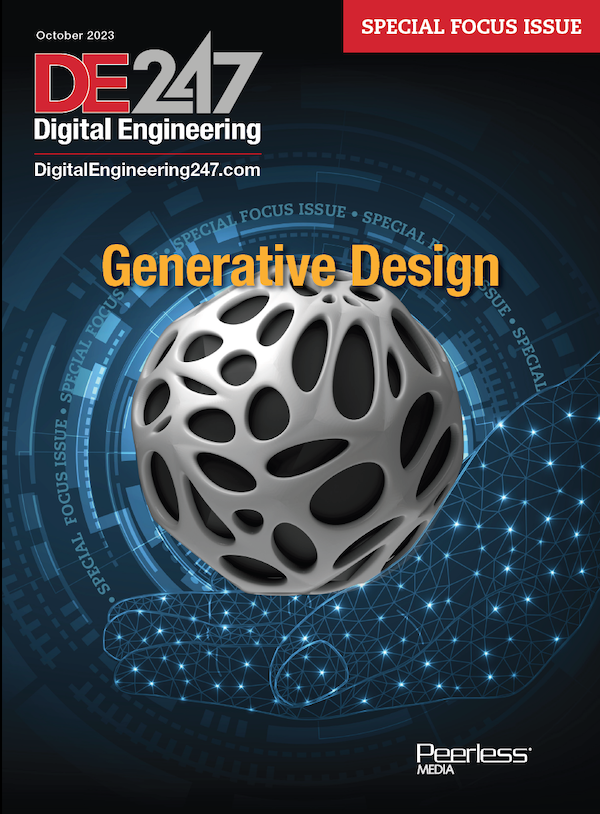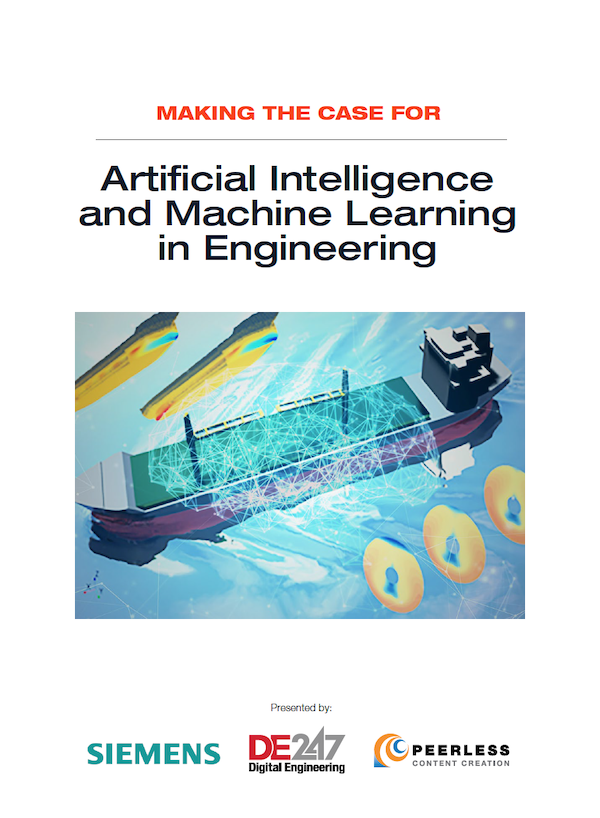DfAM: Nine Best Practices
Here are nine tips to boost your design for additive manufacturing approach.
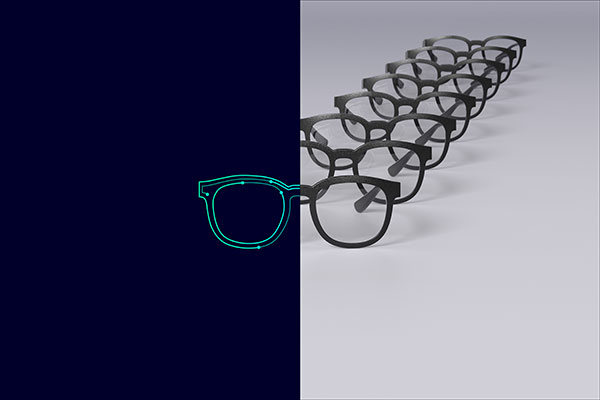
Almost any geometry can be made in a short time with additive manufacturing, and the possibilities are wider than just prototyping and production parts. Image courtesy of Siemens Digital Industries Software.
Latest News
April 9, 2024
Design for additive manufacturing (DfAM) is still a new concept for many companies that are just getting started with using AM for creating end-use parts and products. AM offers many new and lucrative opportunities for designers. However, approaching such designs with discipline and a sound approach is key.
In a technical paper produced by subject-matter experts for the National Institute of Standards and Technology (NIST), the authors outlined the background of AM and its growing importance to product development and tooling.
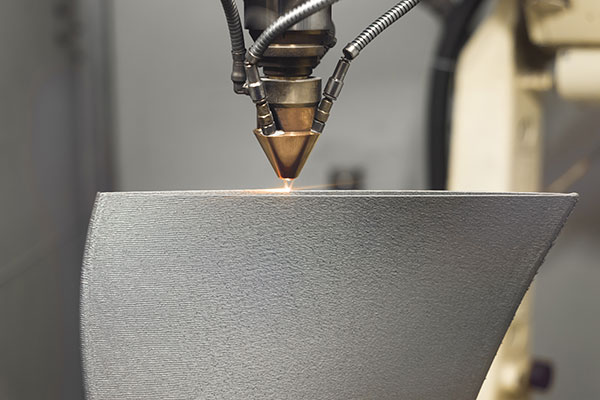
Optimization of all kinds is a hidden benefit of additive’s ability to print any geometry. Image courtesy of Siemens Digital Industries Software.
AM is quite variable, differing in technology, equipment, materials and other factors that can yield products that are both diverse and influenced by an approach to DfAM.
The authors state, “Due to the differences in AM technologies, processes and process implementations, functional and geometrical characteristics of manufactured parts can vary dramatically. Planning, especially selecting the appropriate AM process and material requirements, can be rather involved.”
This is only the beginning of considerations that must be applied to DfAM. The paper states that manufacturability using AM processes has been well studied, but gaps exist in the design process when catering to the needs of manufacturability.
“Designers today are challenged with a lack of understanding of AM capabilities, process-related constraints and their effects on the final product,” the paper continues. “Challenges are compounded by the ambiguity of where design for AM ends and process planning begins. These ambiguities can be addressed through design principles and corresponding design rules for AM parts.”
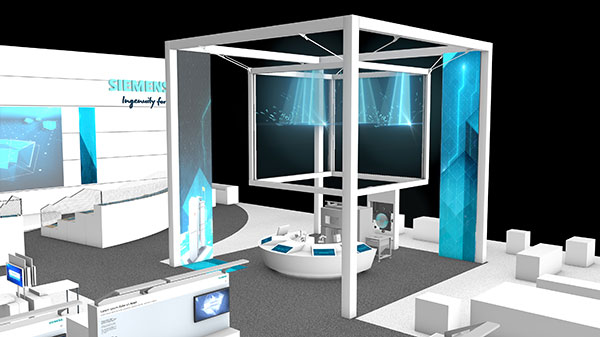
There are more inputs than just part geometry to consider when designing products for additive and communicating with manufacturing. Image courtesy of Siemens Digital Industries Software.
So, what are some tips, tricks, principles, rules and hacks to keep in mind in building your approach to DfAM? We consulted some experts and came up with nine tips to boost your DfAM practices:
- Utilize Topology Optimization and Simulation Tools: Using the right tools in the right applications is significant. “As the field evolves, the use of simulation tools like COMSOL Multiphysics for generative design, including topology optimization, becomes progressively important,” says Bjorn Sjodin, senior vice president of product management at COMSOL. “These tools enable exploration of the landscape of design possibilities that balance functionality, weight, cost, manufacturability and aesthetics. By incorporating multiphysics analysis into your optimization studies, you can push the boundaries of what is possible, creating parts that are optimized for performance and weight without being constrained by traditional manufacturing limitations. In addition, multiphysics analysis can lower the risk in an AM project with a brand-new design by allowing one to consider multiple physical aspects.”
- Design for the Final Print Process: Begin with the end in mind are words of wisdom, simple but true. “Understand how the final printing will work,” says Ashley Eckhoff, a project manager for digital manufacturing, additive program at Siemens Digital Industries Software. “Think about things like the orientation the part should be printed in. Where will supports attach? How does that affect surface finish and overhangs? Just as with other manufacturing methods, there are more inputs than just the part geometry, so you want to take those into consideration when designing the geometry and communicating with manufacturing.”
- Prepare for Hybrid Manufacturing Approaches: Think hybrid by combining AM with traditional manufacturing. “Looking ahead, the integration of additive manufacturing with traditional manufacturing techniques will become increasingly important,” says COMSOL’s Sjodin. “Design with a hybrid approach in mind, considering how parts designed for AM can be combined with conventionally manufactured components. This requires a good understanding of both sets of manufacturing constraints but opens new possibilities for reducing costs, improving performance and speeding up production cycles. By designing for hybrid manufacturing, you can leverage the best of both worlds, making it possible to use AM in mass production indirectly.”
- Establish Best Practices to Guide Design in Your Own Culture: “Design engineers want to fabricate and test parts in an efficient and cost-effective manner,” says Mair DeMarco, director of learning experience and excellence at the American Society of Mechanical Engineers (ASME). “Engineers want to get to a functional part as quickly as possible without spending time and money on R&D. So, they need a framework to standardize best practices and guide them as they navigate through opportunities and the limitations of the most common use cases in AM and determine when AM is appropriate for new business opportunities.” In ASME’s Design for Additive Manufacturing with Metals Professional course, ASME advocates for the Replicate Adapt Optimize framework.
- Let Design Freedom Inspire Your Creativity: With AM, there’s a very high ceiling of design possibilities. It’s important that designers capitalize on this ceiling and maximize their freedom to harness their own creativity. “AM offers unprecedented design freedom, allowing for the creation of complex geometries that were previously impossible or too costly to produce,” says Sjodin. “Take advantage of this by thinking outside the traditional design paradigms. Consider how to best utilize the material and process capabilities of AM to innovate and solve problems in new ways. This could involve designs that may serve multiple purposes at once. For example, designing a sophisticated internal structure that simultaneously offers lightweighting and at the same time optimizes with respect to thermal management.”
- Think About Where Optimization Is Important: DfAM is so much about the right applications in the right places. “Because additive manufacturing can recreate complex geometry quickly, areas where part geometry can be optimized are a great use case,” says Siemens’ Eckhoff. “Can you optimize the flow of a fluid by printing ductwork? Can you optimize weight savings with a printed part? Can you optimize the mechanical advantage with printed parts? Can you optimize the process you use daily by printing a few parts? Optimization of all kinds is a hidden benefit of additive’s ability to print any geometry any time, any place.”
- Replicate, Adapt and Optimize: “Replicate is about time; adapt is about cost; and optimize is about quality and adding the most value,” says DeMarco. “Applying this framework, a design engineer can simply replicate a part when they’re in need of an exact copy or a legacy part that is no longer in production or not readily available. If and when they can’t start fresh with a new design, they can adapt an existing part design to reduce cost, enhance performance and reduce excessive postprocessing of the part. Ideally, however, the design engineer can optimize the design for AM, which provides the freedom to change part geometry, ensures significant performance improvements [and] parts that print quickly, cost-effectively and use material most efficiently.”
- Think Broadly about the Advantages of AM: Narrow-mindedness is not a smart way to hook up to the many merits of AM. “Additive can be used for much more than just prototypes and end-use parts,” says Eckhoff. “Perhaps you can design a replacement for a broken part in your factory with a long lead time. Maybe you can improve the ergonomics of a workstation on your line by designing and printing a few parts. Think outside the box because almost any geometry can be made in a short time with additive and the possibilities are way wider than just prototyping and production parts.”
- Keep It Simple, Optimize and Integrate: It’s a recurring theme in DfAM to keep things short. Christopher Robinson, a senior product manager at Ansys, says to focus on optimizing your design, not complicating your design and let software help you where it can help. “Integration of parts can reduce the number of interfaces and tolerance stackup, thereby allowing you to have higher build success and more options for manufacturing equipment,” he says.
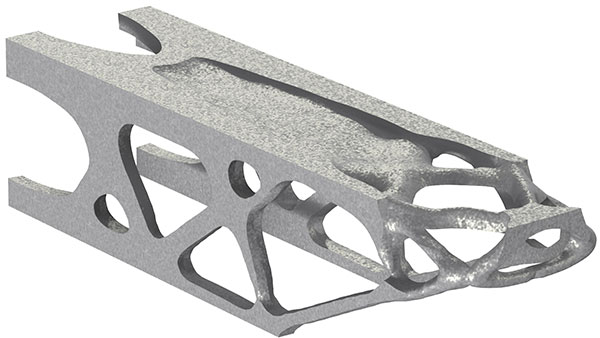
These points are starting points to build better guidance and principles in approaching the opportunities that abound in 3D printing and AM. The onus of the best approach lies with the culture of the organization tasked with design. An approach needs to include sound principles and sensible rules. However, the approach must be flexible enough to allow for innovative ways to use AM.
Currently, we can find and read about an unusual application of AM—in bioscience, sustainable energy, product design and so many industry sectors—any day of the week.
In conclusion, we return to the NIST paper authors previously mentioned. “Capturing explicit design rules can potentially lead to a breakthrough in design and process planning. Importantly, having a standard to capture such constraints and opportunities through design rules will broaden AM industrial applications.”
More COMSOL Coverage
More Siemens Digital Industries Software Coverage
Subscribe to our FREE magazine, FREE email newsletters or both!
Latest News
About the Author
Jim Romeo is a freelance writer based in Chesapeake, VA. Send e-mail about this article to DE-Editors@digitaleng.news.
Follow DE




